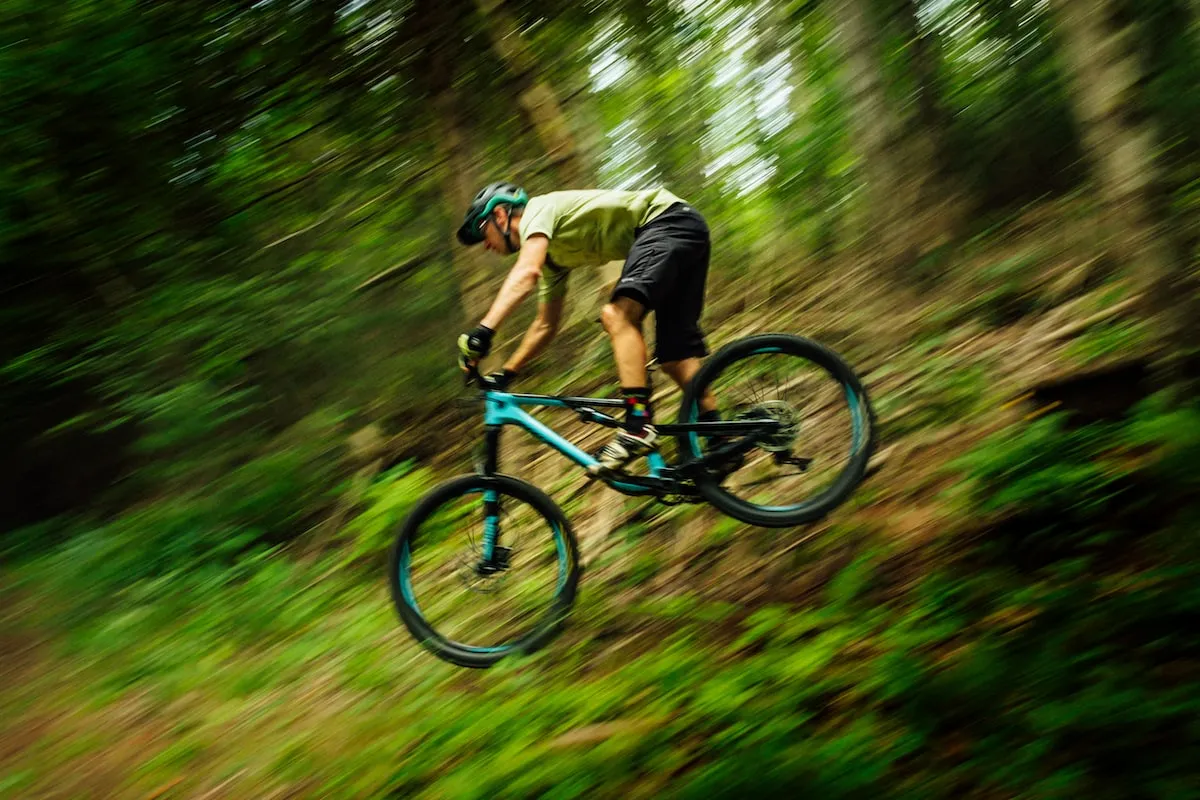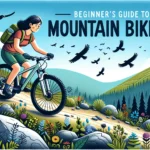Mountain biking is an exciting sport that allows you to explore nature while getting a great workout. If you’re interested in trying mountain biking for the first time, there are a few things you’ll need to do to get started safely. This guide will provide tips for buying the right bike and gear, finding trails to ride, and learning essential mountain biking skills. With some preparation and practice, you’ll be ready to hit the trails and start enjoying the thrill of mountain biking!
Choosing a Mountain Bike
The first step to getting started is purchasing a quality mountain bike. There are a few main types to choose from:
Hardtail mountain bikes have a suspension fork in the front but a rigid frame in the back. This makes them lighter and more affordable than full suspension bikes. Hardtails are efficient pedaling bikes great for cross country trails.
Full suspension mountain bikes have suspension in both the front and rear. The added suspension provides increased control and comfort over rough terrain. Full suspension bikes are ideal for downhill or all-mountain riding.
Fat bikes have oversized tires that allow you to ride in snow, sand, or mud. Their wide footprint gives them amazing traction.
Consider where and how often you plan to ride when selecting a mountain bike type. Talk to bike shop staff about the best options for your needs and budget.
You’ll also need to pick the right frame size to get a proper fit. Standover height and reach are key factors in finding the right size. Test ride different sizes and go with what feels most comfortable.
Keep in mind that mountain bikes come in a wide range of quality and prices. Invest in the best bike you can afford. Higher-end bikes have better suspension, drivetrains, brakes, and other components that will enhance performance on the trail.
Select Riding Gear
Protective riding gear is a must for mountain biking. Basic gear includes:
- Helmet – Choose an adjustable helmet that meets safety standards and fits your head properly. Full-face helmets provide more protection for downhill riding.
- Gloves – Mountain biking gloves protect your hands and absorb vibrations. Look for gloves with sturdy palm padding.
- Eye protection – Keep your eyes safe from insects, dirt, and errant branches with goggles or sunglasses.
- Shoes – Shoes with grippy rubber soles and stiff soles will help you keep your feet on the pedals. Opt for cleated shoes once you progress to technical riding.
- Clothing – Wear breathable, flexible clothing that wicks sweat. Padded bike shorts help prevent chafing. Bring layers for changing weather conditions.
- Hydration pack – A hydration pack carries water and supplies. Use one designed for biking with pockets and compartments for tools, food, phone, etc.
- Bike repair kit – Carry basic tools, tire levers, spare tube, and patch kit in case you get a flat or mechanical issue on the trail.
Wearing the right safety gear and packing necessary supplies will give you confidence when heading out on mountain bike rides.
Learn Key Skills
Before hitting steep, rough trails, it’s wise to start by practicing basic mountain biking skills. Take your new bike to a park or open area to get comfortable with:
- Balancing – Pedal slowly, lift up your feet, and focus on steering the bike while coasting.
- Braking – Get a feel for applying your brakes smoothly. Don’t brake too hard or skid.
- Shifting gears – Test shifting your chain between gears and pedaling in different gears. Use lower gears for climbing and higher gears for descending.
- Handling corners – Lean your bike into turns. Look through the turn and rotate your body. Start with wide turns and build up to tighter ones.
- Climbing – Keep your weight centered over the bike when going uphill. Use your gears to maintain momentum.
- Descending – Stay loose over bumps. Use your brakes carefully. Keep off the brakes while cornering.
Practicing these fundamental skills will boost your confidence and control once you get off-road. Take it slow building up technical skills on trails. Ride within your ability level.
Find Mountain Bike Trails
Finding the right mountain bike trails to start with is key. Look for:
- Graded trails – Trails with Green Circle, Blue Square, and Black Diamond ratings help you find ones matched to your current skill level. Start on Green before moving up.
- Smooth dirt trails – Paths with loose dirt or packed soil offer an easier intro compared to rocky, rooty terrain.
- Relatively flat areas – Try trails with more moderate climbs and descents. Steep hills require more advanced skills.
- Loop routes – Loops allow you to ride continuously without having to double back. Out-and-back routes are fine too.
Check trail maps and guides to choose suitable mountain bike trails for beginners. Ask bike shop staff and fellow riders for recommendations as well. Once ready for more challenge, step up distance, technical features, and elevation gain.
Prepare for Your First Mountain Bike Ride
When gearing up for your inaugural mountain biking adventure, keep these tips in mind:
- Check trail conditions and weather reports. Avoid muddy or excessively rocky trails at first.
- Tell someone where you’re riding and when you expect to be back. Ride with a partner or group if possible.
- Know your bike’s mechanics and how to fix basic issues like flats, chain problems, etc.
- Pack essentials – trail map, tool/repair kit, first aid, snacks, phone, layers, sunscreen, bug spray, etc.
- Fuel up with a meal a few hours before riding. Hydrate well the day before and day of.
- Get a good night’s sleep. Mountain biking is physically demanding.
- Do a basic stretch after warming up to help prevent muscle strains or cramps.
- Start slow and take breaks. Don’t overdo distance or difficulty early on.
Following proper preparation and safety measures will allow you to succeed and have fun on your inaugural mountain biking outing.
Learn Proper Mountain Biking Techniques
With a quality bike and gear, some practice under your belt, and an appropriate trail picked out, you’ll be ready for your first real backcountry mountain biking experience. As you progress in the sport, work on dialing in proper mountain biking techniques:
- Braking – Use mostly your rear brake. Drag your rear brake slightly to control speed on descents. Brake before corners.
- Climbing – Sit upright and use your body weight to keep the front wheel down. Pedal smoothly and shift to easier gears to maintain momentum.
- Descending – Stay low in an athletic stance. Let the bike move beneath you to absorb impacts. Keep your weight back and look ahead.
- Cornering – Approach corners wide, then square your turns. Lean your bike into the turn, not your body. Look through the exit.
- Obstacles – Scan ahead so you can pick your line. Lift your front wheel up and over obstacles using your legs and arms.
- Shifting – Use your front shifter for bigger gear changes. Try to avoid cross chaining between large front/rear sprockets or rings.
Practice makes perfect when honing these fundamental mountain biking skills. Take lessons and ride with more experienced mountain bikers to continue improving.
Ride at Your Own Pace
As you spend more time mountain biking, you may feel tempted to bike beyond your ability or take on rocky terrain before you have the skills needed. It’s critical to ride at your own pace and slowly work up to technical challenges. Pushing yourself too far too fast leads to crashes, injuries, and frustration.
Stay conservative choosing trails and features to tackle. Repeat routes multiple times to progressively hone your competence and courage. Seek input from seasoned riders to help assess your skills honestly. Be patient with yourself mastering new techniques before moving to harder trails. Celebrate small achievements along the way.
By pacing yourself appropriately and being realistic about your skill level, you’ll continue advancing and having a blast in the sport while staying safe. Mountain biking is meant to be fun, not frightening. Make sure you work your way up so you continue loving every ride.
Join the Mountain Biking Community
One of the great aspects of mountain biking is the community surrounding the sport. Once you start progressing, consider these tips for meeting fellow riders:
- Chat with people you meet out on the trails. Experienced riders often enjoy sharing advice.
- Join a mountain biking club or group. Many organize group rides, skill clinics, races and social events.
- Volunteer at mountain bike events, festivals or trail maintenance days. You’ll meet passionate riders.
- Follow mountain biking athletes, brands, events, and organizations on social media.
- Check local outdoor shops and bike parks for group rides and special events.
- Consider taking a mountain biking vacation at a renowned destination like Moab or Whistler.
Surrounding yourself with the mountain biking community will keep you motivated while allowing you to make new friends and learn from seasoned veterans. Plus having riding buddies makes the sport even more enjoyable.
Keep Progressing in the Sport
As you get started in mountain biking, remember to celebrate small achievements, be patient mastering new skills, and simply have fun along the trail. Avoid comparing yourself to other riders or rushing into terrain that’s over your head. Stay within your ability level and keep progressing safely.
With some time and practice, you’ll be ready for bumpier trails, bigger drops, longer distances, and races if desired. But there’s no set timeline – progress at your own pace. Mountain biking is a lifelong journey of learning. Stay humble, be willing to work hard, lean on others, and the sport will continue rewarding you with epic adventures and camaraderie.
Now that you know the basics for getting started as a mountain biker, it’s time to pick out that new ride, gear up, and hit the trails! Start slowly, be safe, and have a blast exploring the path less pedaled. The thrill of mountain biking awaits.






